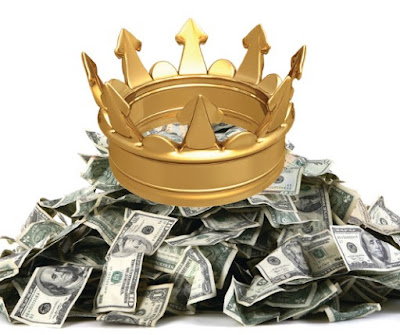The US reports September CPI on October 12 and the first decline in three months in the year-over-year rate is expected. However, the price action itself may overshadow not only the CPI but other high-frequency data in the week ahead. US grew more than twice the number of jobs in September as economists expected. US interest rates and the dollar jumped initially, and stocks were dumped. And then they reversed. Many narratives will be spun to explain the price action. While we could not have anticipated 336k increase in nonfarm payrolls or the 119k upward revision in the previous two months, we did recognize that dollar was tired. That the dollar and US rates were unable to sustain the upside momentum is what one would expect if the market had already discounted a strong Q3 US economy. The Atlanta Fed's GDP tracker still has it on course for nearly 5% growth.
China's mainland markets will re-open from the extended national holiday. Recall the backdrop. Disappointing economic activity spurred many modest measures from Beijing and the PBOC using soft and formal power. It appears to have begun generating some results, especially for large businesses. The offshore yuan is slightly weaker than where it was when onshore yuan last traded. The deflationary forces reflected in the negative CPI have eased, and there is scope for additional measures to support the economy. A significant development since the holiday began is a sharp 11%-12% drop in oil prices, seemingly fueled by concerns of weakening demand.
United States: A partial federal government shutdown has been avoided, through continuing resolutions until November 17. It is far enough way to push it toward the edges of investors' radar screens. That said, the machinations in the House seem to bolster the chances that the dodged bullet strikes. US job growth re-accelerated in September and with a 336k increase in nonfarm payrolls, almost twice the median forecast in the Bloomberg and Dow Jones surveys (~170k). Yet, the dollar's momentum was not sustained after the employment report, and the spike in yields was retraced, with settlements near the middle of the session. A detail that has not received much attention is that with the seasonal adjustments, the BLS data showed the third consecutive loss of full-time positions. Still, the dollar's inability to sustain upside momentum on the favor optics is a market tell and would support our priors of the dollar forming a high.
With the employment data out of the way, attention turns to the inflation gauges. Producer prices are not the story. In August producer prices had risen 1.6% year-over-year, the highest in four months. A 0.3% increase in September will keep the 12-month pace steady. The core rate may firm a little from 2.2% in August. The real interest is consumer prices. After the year-over-year rate rose in July and August, a small dip is expected in September (3.6% vs. 3.7%). That allows for a 0.3% increase in September after an energy-flattered 0.6% increase in August. A 0.3% increase means that the core rate will slow to 4.0%-4.1% from 4.3% in August. It would be the lowest reading since September 2021. The minutes from the September FOMC meeting are due on October 11. This was the meeting that was a hawkish hold, with a majority of Fed officials seeing another hike as likely appropriate here in Q4 and reducing the number of cuts that may be needed next year to two from four. The soft-lending scenario that was endorsed is consistent with the "higher for longer" mantra. At the same time, there is great uncertainty, and it could be clearer in the minutes than in the public discourse. We note that on the eve of last month's Fed's decision, the 2-year note settled at 5.09%. It finished last week at 5.08%. The implied yield of the June 2024 Fed funds futures contract is about 5.23%, down a couple of basis points since before the Fed met in September.
The Dollar Index peaked on October 3 near 107.35. Before the stronger than expected jobs data, it had eased to about 106.25. It rallied to almost 107.00, which is about the (61.8%) retracement of the week's decline. Yet, the momentum was not sustained, and Dollar Index was sold to a new low near 105.95. After trading on both sides of Thursday's range, the Dollar Index closed below the low (~106.30). The Dollar Index's momentum indicators are flagging. Still, a break of 105.80 would lend credence to ideas that a top is being forged.
China: Mainland markets re-open after a six-session holiday. During the mainland holiday, the dollar traded against the offshore yuan between about CNH7.2810-CNH7.3315. Chinese officials can be expected to continue to lean against the wind in seeking to moderate the yuan's decline. At the same time, its concern does not seem sufficient to have material transparent intervention as Japan is apparently considering. Nor do concerns about the exchange rate eclipse the desire to put the economic recovery on more solid footing. China is expected to report new lending figures. Non-bank lending was particularly strong in August (CNY1.77 bln or a little more than half of the month's aggregate financing. China will also report September trade figures. The trade surplus through August is little changed year-over- year at about $553 bln (in the Jan-Aug period 2022, China's trade surplus was ~$549 bln). Exports have been falling on a year-over-year basis beginning last October, with the exception in March and April. Imports have been falling beginning last October as well, and its sole exception was February. While China's trade figures are politically sensitive, the financial markets may put more emphasis on the inflation reports. Recall that in August China reported its first positive year-over-year CPI since May and that was 0.1%--a rounding error. It would be disappointing if it did not accelerate in September. The pace of deflation in producer prices slowed from -6.4% in June to -3.0% in August. It looks as if the corner has been turned and the deflation phase is ending. Still, the takeaway is that price pressures do not stand in the way of additional monetary easing by the PBOC. The dollar is settled near CNH7.3095 before the weekend compared with CNH7.2950 when the mainland markets began the extended national holiday.
Japan: The main focus is on the Japanese official intervention in the foreign exchange market and in the government bond market. It is not clear whether there was material intervention last week the dollar was around JPY150, but the BOJ's unscheduled bond buying, and new purchases were also pre-announced last week. It does not look sustainable for the BOJ to try to cap bond yields and put a floor under the yen as the same time. Japan has three data report in the coming day and neither frequently elicits a market response. First is the August current account. It typically deteriorates in August. It had risen to JPY2.77 trillion in July, the largest surplus since March 2022. In the first seven months of the year, Japan's current account surplus was about JPY10.8 trillion (~$78 bln) compared with JPY8.1 trillion in the Jan-July 2022 period. Japan's current account surplus is not driven by trade. Japan has recorded a JPY5.1 trillion trade deficit (balance-of-payments terms) through July this year. It had a JPY6.8 trillion deficit in the same period last year. Second is September's PPI. It has fallen every month this year. It peaked at 10.6% last December and in August was at 3.2%. Last September 0.9% jump will most likely be replaced with a lower number, allowing the year-over-year pace to continue to decline. Third, Japan reports August core machinery orders. They fell 1.1% in July to bring the year-over-year decline to 13%. Better August and September data are expected.
The reaction to the US jobs data saw 10-year Treasury yield rise to a new high slightly shy of 4.89%. This saw the dollar rise to nearly JPY149.55, the highest since the JPY150 level was pierced on October 3. Although the dollar closed slightly lower on the week to end a four-week surge, it is not clear a meaningful top is in place. A close below the 20-day moving average near JPY148.40, which the greenback has not done since late July, would be an encouraging sign.
Eurozone: The economic diary is light in the days ahead. There are two reports of note: the ECB's inflation survey and August industrial output. The median one-year inflation outlook fell from 5.0% at the end of last year to 3.4% in June, where it remained in July. The three-year median expectation fell from 3.0% last December to 2.3% in June before ticking up to 2.40% in July. Rising oil prices and a weaker euro could lift survey results due October 11. The manufacturing PMI warns that industrial output may not have recovered much from the 1.1% drop in July. The euro traded on both sides of Thursday's range ahead of the weekend and recorded session highs of $1.06 after the US jobs data. It settled above Thursday's high (~$1.0550) to post a bullish outside up day. A move above the $1.0600-10 area is needed to lift the technical tone.
UK: The data highlight of the week ahead will be the August GDP and details. The economy unexpectedly contracted by 0.5% in July (-0.2% expected) and this has renewed fears of recession. Last month, the BOE reduced its Q3 growth forecast to 0.1% from the 0.4% projection made in August. In July, all the main sectors of the UK economy weakened: industrial production, services, and construction, while the trade deficit fell (to GBP3.45 bln from GBP4.79 bln in June). Sterling's price action has become somewhat more constructive. A key reversal was recorded on October 4 as sterling fell to a new six-month low (~$1.2035) before rallying back and closing above the October 3 high (~$1.2100). It hesitated near $1.2200 but follow-through buying after the US jobs data lifted was a new high for the week (~$1.2260). The momentum indicators have turned higher. The next technical hurdle is the $1.2280-$1.2310 area. Overcoming it would strengthen the conviction that a bottom has been forged.
Canada: Canada's economic data were mixed but the Canadian dollar was not a match for the greenback, which rose to about CAD1.3785, the highest level since March. The September manufacturing PMI (47.5 vs. 48.0) and the IVEY PMI (53.1vs. 53.5) softened, but rather than record a trade deficit in August, Canada reported a (small) trade surplus and the July deficit was halved. More importantly, the September employment data was better than expected with almost 64k jobs, created (median forecast in Bloomberg's survey was for 20k). Unemployment was steady at 5.5%, not rising as economist projected and the wage rate unexpected ticked up to 5.3% from 5.2% (median forecast was a slight decline). Canada reports August building permits and September existing home sales in the coming days but they are not typically market movers. The weakness of the Canadian dollar seems excessive. If a US dollar high is in place, as we suspect, we look for a near-term test on CAD1.3645 and then CAD1.3600.
Australia: Several private surveys are due in the coming days. They include Westpac's consumer confidence, NAB's business confidence, and the CBA's household spending survey. Perhaps the most important survey is the October 11 Melbourne Institute's measure of inflation expectations. It had fallen from 5.6% in January to 4.6% in April but recovered to back to 5.2% May through July. It declined back to 4.6% in September. The Australian dollar posted an outside up day before the weekend, trading on both sides of Thursday's range and closing above its high. It entered a band of resistance that extends from about $0.6390 to $0.6420. A more formidable obstacle is $0.6500. The Aussie has not closed above in two months.
Mexico: The peso has fallen for the past three weeks, which is the longest losing streak of the year. In fact, there has not been a longer losing since Sept-Oct 2021. Still, it does not appear to be specific to Mexico, except perhaps the positioning. The risk-off environment of a relentless rise in US interest rates and the dollar proved too much. The greenback surge to almost MXN18.49 ahead of the weekend, its highest level in almost seven months. It has settled above the 200-day moving average for the first time in a little over a year. The dollar's momentum indicators are getting stretched, and although they have not turned down, the dollar's surge may be over. Initial support may be seen around MXN18.00-05, a break of the MXN17.80 could bring in new peso buyers. Mexico reports September CPI on October 9. It has been slowing uninterruptedly since January's 7.91% year-over-year rate. It stood at 4.64% in August and like eased to around 4.5% The core rate is stickier. It peaked at 8.51% last November and was at 6.08% in August. It may have slowed to around 5.75% last month. Mexico reports August industrial production on October 12. The survey data warns that July's gains of 0.5% (0.8% for manufacturing) may not be repeated. The central bank is on hold, with the overnight rate at 11.25%. The swaps market sees practically no chance of a cut this year and less than a 30% chance of a cut in six months.
Tags: Featured,macro,newsletter

























